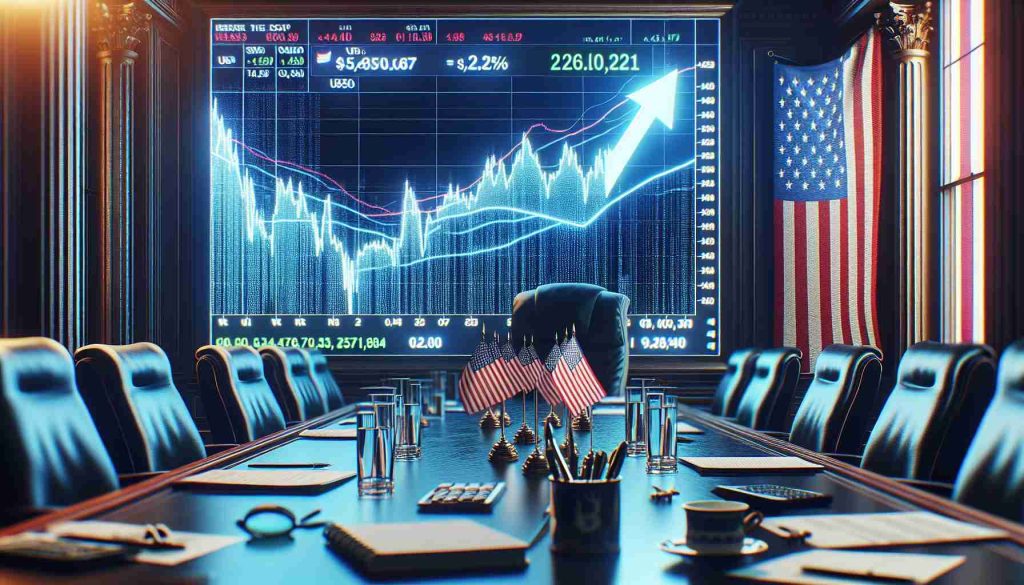- US stocks rebounded significantly following President Trump’s tariff announcements on steel and aluminum.
- The Dow Jones climbed by 0.3%, while the S&P 500 and Nasdaq surged by 0.7% and over 1%, respectively.
- Domestic steel producers benefited greatly, with Cleveland-Cliffs seeing a 14% increase in stock value.
- Escalating trade tensions pose risks of a broader trade war, notably affecting relations with Canada and Mexico.
- Concerns over potential stagflation are emerging amidst rising tariffs and economic uncertainty.
- Upcoming economic reports, like the Consumer Price Index, may shed light on inflation trends.
In a stunning market rebound, US stocks climbed on Monday, fueled by President Trump’s announcement of sweeping new tariffs on steel and aluminum imports. After enduring its worst loss in nearly a month, the Dow Jones Industrial Average bounced back by 0.3%, while the S&P 500 and tech-heavy Nasdaq soared by 0.7% and over 1% respectively.
Steel stocks skyrocketed as investors anticipated a boon from the new 25% tariffs intended to favor domestic producers. Cleveland-Cliffs led the pack with a remarkable 14% spike, followed closely by Nucor and U.S. Steel, which also saw significant gains.
However, the prospect of escalating trade tensions looms large. Trump’s pledge to impose tariffs on all trading partners has raised concerns of a full-scale trade war, particularly with major suppliers like Canada and Mexico, already shivering under the threat of imminent tariff hikes.
Amidst this turbulent backdrop, uncertainty hangs over the economy with worries that ongoing tariff increases could lead to stagflation—a dangerous combination of slow growth and rising inflation. Investors are now tuned in to upcoming key reports, including the Consumer Price Index, which will provide insights into the inflation landscape.
As many on Wall Street grow accustomed to the President’s unpredictable trade maneuvers, Monday’s gains highlight a shifting market sentiment. The key takeaway? Investors are learning to navigate the choppy waters of Trump’s trade policies, but vigilance is crucial as the economic implications unfold!
The Rise and Risks: Understanding the Impact of Steel Tariffs on US Markets
US Stock Market Rally Amid Tariff Announcements
In a remarkable turn of events for the US stock market, shares climbed significantly following President Trump’s announcement of new tariffs on steel and aluminum imports. This decision has sparked a variety of reactions from both investors and experts, raising questions about its longer-term implications for the economy.
Market Insights and Trends
1. Immediate Stock Performance: Following the tariff announcement, the Dow Jones Industrial Average increased by 0.3%, while the S&P 500 and Nasdaq jumped by 0.7% and over 1% respectively. Steel stocks, particularly Cleveland-Cliffs, soared by 14%, indicating strong market optimism for domestic producers.
2. Potential Economic Risks: While the market reaction was positive in the short term, analysts warn of potential downsides. The tariffs may provoke retaliatory measures from trading partners, creating a risk of a trade war, which could ultimately harm the global economy and lead to increased prices for consumers.
3. Inflation and Stagflation Concerns: Experts are closely monitoring upcoming economic indicators, such as the Consumer Price Index. Continued tariff increases raise the specter of stagflation—a troubling situation characterized by high inflation and stagnating economic growth—putting pressure on policymakers to respond effectively.
Pros and Cons of Tariff Policies
– Pros:
– Encourages domestic production by making imported steel more expensive.
– Boosts stock prices of steel manufacturers, leading to short-term profits.
– Cons:
– Risk of retaliation from other countries affecting exports.
– Potential increase in prices for consumers as costs are passed down.
Key Questions and Answers
1. What are the long-term implications of the new tariffs on the US economy?
– The long-term effects could include increased production costs for manufacturers that rely on steel and aluminum imports, potentially leading to higher consumer prices and slower economic growth. The risk of retaliatory tariffs from other countries could also negatively impact US exports.
2. How may investors prepare for potential market volatility caused by these tariffs?
– Investors should diversify their portfolios, keep an eye on economic indicators related to inflation, and monitor geopolitical developments closely. Utilizing risk management strategies and staying informed about trade policies can help mitigate potential losses.
3. Are there potential benefits for the average consumer as a result of these tariffs?
– While domestic steel production may increase, leading to job growth in that sector, consumers may face higher prices for goods manufacturing—especially products that heavily utilize steel. The net effect on consumers will depend on the balance between job creation and cost increases.
For more insights on economic trends and market forecasts, visit Investopedia.
